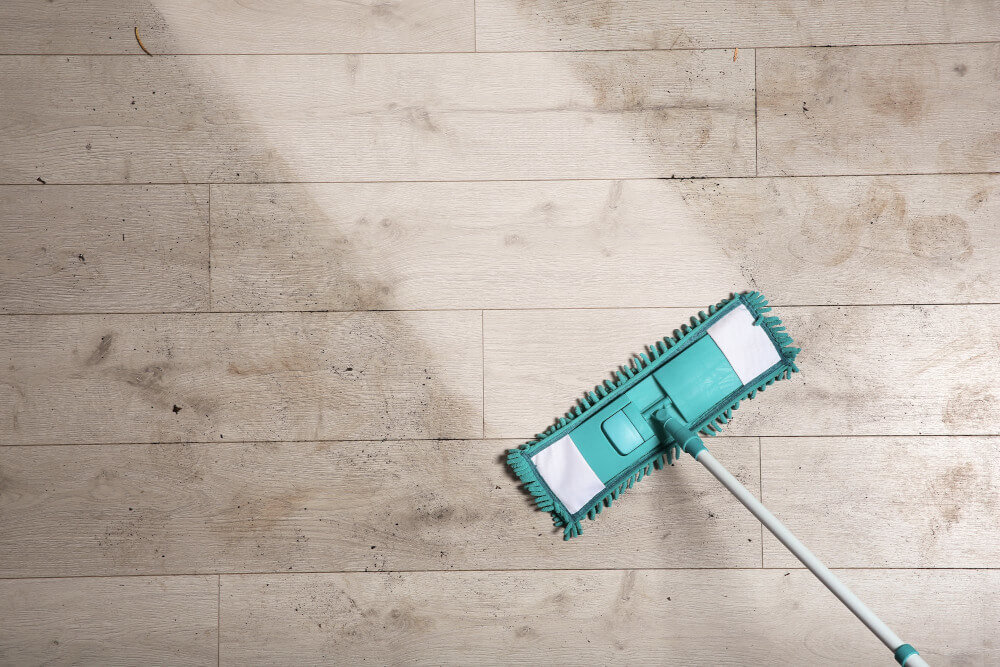Fall is officially upon us. Though you might not be thrilled about summer’s end, there’s so much to look forward to this season — colorful landscapes, crisp air, delicious harvests, etc. On the other hand, fall conditions can wreak havoc on your home both inside and out. While your interiors are mostly protected from wind, rain, and leaves, it’s all too easy to track in leaves and other debris after spending some time outdoors (especially if you’ve been raking). Leaving leaves around your home isn’t just a major eyesore, either — doing so can damage your hardwood floors. Let’s discuss some potential negative effects of allowing tracked-in leaves to linger on hardwood flooring.
How Leaves Impact Floors
Deep Discoloration
If you’re tracking in leaves this fall, you’re also tracking in dirt. Even small amounts of dirt can harm your hardwood flooring, especially when it’s pressed down onto your floors by feet and furniture. After a while, the dirt that enters your home breaks down into sticky, stubborn grime. This grime will then enter any pores and cracks it can find, altering the color of your beautiful hardwood floors. If your floors become infiltrated on this deep a level, removing the grime and restoring your floor’s appearance becomes more and more of an uphill battle. You may need to hire flooring companies to bring back your floor’s desired coloration via sanding and refinishing.
Rot and Warping
Dirt isn’t the only element that comes along for the ride when you track in leaves. Water is another problematic partner in crime. Fallen leaves can store significant amounts of moisture. This moisture will gradually get absorbed by your residential flooring, especially if your hardwood floors aren’t well sealed. If enough moisture gets through the pores and cracks, it can expand and contract with temperature changes and begin to warp the planks. Planks that bend too far may fracture, too. Moisture also attracts fungi, potentially causing your floors to rot.
Insects and Other Pests
As if dirt and water weren’t bad enough, leaves can also harbor and attract various insects. While many insects are harmless enough, some may attempt to eat away at your hardwood floors and other wooden surfaces. Plus, having insects inside your home can attract other predatory pests like rodents, which can also damage your floors. If nothing else, bugs are called “bugs” for a reason — they’re nuisances, and no one wants them inside their home, regardless of the kinds of floors you have. Ants might not chew away at your vinyl plank flooring, but they’re still ants.
Scuffs and Scratches
Abrasions are also worth worrying about when it comes to tracked-in leaves. While many fallen leaves are soft, older, dried-out leaves can become sharp enough to scratch your hardwood floors if dragged across them with enough force. In most cases, these scuffs and scratches are minor enough to clean away or buff out. Still, who wants to spend time dealing with these issues when there’s so much to enjoy during the fall?
Leave Those Leaves Outside this Autumn
Tracked-in leaves can put a real damper on the season. So, do your best to clear off your shoes or boots before stepping back into your home, and make a point to clean your hardwood floors on a regular basis all season long (and beyond). For everything else involving hardwood flooring installation, repair, and maintenance, the Ozburn-Hessey Company can help. We’re flooring and installation experts serving homes and businesses in the greater Nashville, TN, area. Contact us today!




